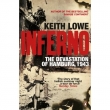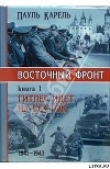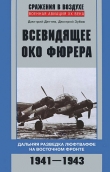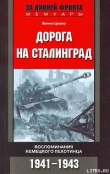
Текст книги "Rommel's Deutsches Afrika Korps 1941-1943"
Автор книги: Автор Неизвестен
Жанры:
История
,сообщить о нарушении
Текущая страница: 15 (всего у книги 19 страниц)
Battle Group Gerhardt was to.thrust through the pass and then swing northwards to pass completely round the Djebel Lessouda and then to cut the Faid-Sbeitla road. The forces for this attack were 1st Battalion 7th Panzer Regiment, 2nd Battalion 69th Panzer Grenadier Regiment, 2 platoons of the Panzer Engineer Battalion, 1 platoon of SP anti-tank guns, and a battery of 10.5cm guns. Battle Group Lang was in reserve.
During the night divisional engineers went in under the protection of the Italian troops, who held the high ground at the mouth of the pass, and cleared the mine-field just before zero hour. Shortly before 04.00hrs, just as the panzers were about to move forward into the attack, a sudden sandstorm swept the area and reduced vision forcing the engineers to hand-guide the tanks through the pass with lamps and hand torches. Despite the darkness which the sandstorm had intensified, the two assault groups from 10th Panzer made good speed.
St Valentine's day 1943 dawned and with it began the battle for Sidi bou Zid. The advance by Battle Group Gerhardt made good time in its swing round the Djebel Lessouda but as the light became stronger, heavy and accurate artillery fire was directed upon it from OPs positioned on the crest of the djebel. Immediately the tempo of the panzer drive was raised to pass behind the mountain and to attack the troublesome American guns. Quickly the panzer formation opened into attack grouping and formed a series of echelons. Behind the lead company came battalion headquarters with the lighter vehicles and the whole unit was so deployed that an attack on either flank could be met by the whole battalion pivoting to form a broad front. The panzer attack flowed forward, despite the United States artillery barrage, while behind the armoured spearhead the carriers of the Panzer Grenadier Battalion roared up the slopes of the djebel bringing the infantry to the nearest point from which the American positions could be assaulted.
As Battle Group Gerhardt swung south-westwards it intercepted a United States self-propelled artillery unit which was trying to escape from the advance of Battle Group Reiman. Desperately the United States column tried to make good its escape but the panzer point unit increased speed and began first to overhaul and then to outflank the Americans. In a panic some of the American vehicles were driven headlong into swampy ground and were cut off. The Gerhardt Group, having reached its first objective, the Faid-Sbeitla road, halted and took up all round positions ready to face the inevitable counter-attack.
Meanwhile Reimann Battle Group had emerged from the pass and had thrust towards the Poste de Lessouda engaging a vedette of two Stuart tanks which were hit and destroyed by the longer ranged 8.8cm guns of the Tiger tanks. Other United States tanks belonging to an artillery SP unit began to withdraw but were intercepted by Battle Group Gerhardt as described above. As the panzers reached the Poste de Lessouda, a radio report from a Luftwaffe aeroplane indicated that a strong force of American tanks was moving down upon the Poste in a counter-attack. Reimann Group went into 'hull down' position and as the Allied machines came into range they were picked off one after the other. Both battle groups then waited for the thrust by 21st Panzer to capture Sidi bou Zid but then received intelligence that bad going had delayed the unit's advance. In any case the success of 10th Panzer Division had made the thrusts by the battle groups of 21st Panzer redundant, but eventually Stenkhoff Battle Group, struggling through loose sand, reached the battlefield. Here it was able to intercept the United States tanks which had survived the assaults of 10th Panzer's battle groups and were advancing southwards. Stenkhof Group blocked the road, the only firm surface in that region, thereby forcing the American vehicles to struggle through the sand. It was an unequal contest. The German group with 2nd Battalion 5th Panzer Regiment 2 battalions of Panzer Grenadiers, and heavy artillery under command was not only numerically superior to the Americans, but the panzer guns had a longer range, and the whole force was under a central direction. Combat Command A of 1st United States Armoured Division lost that day 40 tanks and other material including 15 SPs and 2 personnel carriers.
By the afternoon of 14th, the situation was that the Americans had been driven from the battlefield. Reconnaissance detachments belonging to 10th Panzer Division had entered Sidi bou Zid and the main of the division was in position north-east of the village. Panzer Grenadiers were combing the area for American stragglers and combat engineers were destroying the American vehicles. Ziegler, confident of victory, began to arrange for the move of 21st Panzer Division, but the aggressive action of the American troops, cut off and isolated on the djebels but still full of fight, coupled with the certainty of a counter-attack by United States tank forces, delayed the transfer.
During the night the vehicles were serviced, refuelled, and re-armed and as more panzers from Africa Corps arrived in the area they, too, were put into position south of Sidi bou Zid. At first light a panzer company with grenadier support put in a dawn attack to clear the American infantry from the djebels while other detachments strengthened the defences of the village. By the time that the Americans began their counter-attack the whole area had been prepared for defence with field artillery supporting the anti-tank line. Positions were occupied both inside and ouiside the village and other panzer units took post on the flanks. The area across which the Americans would have to advance was a flat and open plain cut across with wadis. These steep-sided, deep, dried-up water courses were impassable to tanks except at certain points where the wadi walls were lower and the Germans sited their artillery to cover these crossing points.
It was nearing midday when the panzer reconnaissance detachment raised the alarm that dust clouds were to be seen and that an American tank column was advancing from the direction of Sbeitla. This was one battalion of Combat Command C whose intention was to destroy the German forces and to release the isolated United States troops. The German defence plan went into operation and panzers from both divisions moved into ambush positions, thrusting two encircling arms along the flanks of the American advance. Soon the Allied tank force had crossed the first of the wadis and, assembling on the far side of this, took up battle formation again and headed for the second water course. But, as the tanks began to break formation to look for crossing points, the battery of 8.8cm guns which had been waiting opened up and smashed the cohesion of the assault with accurately aimed barrages of armour piercing shot.
On the flanks of the American advance the panzers were also ready and waiting. At a command the whole German column turned inwards and to the barrage from the village was added the cannonade of the vehicles on the flanks. The American charge advancing as a deep formation of column of companies was struck and hurled back. Caught in a pocket of fire the survivors were struck again as they tried to carry out their orders. And even when at last the American attack recoiled there was still a gauntlet of shells to be run before they could reach the safety of their own lines. By twilight the battle had ended.
On 16 February a unit from 10th Panzer reconnoitred to a road junction some 14 miles north-west of Sidi bou Zid and joined forces with a second force of panzers on the Faid-Sbeitla road. The mission for 10th Panzer ended and in accord with the orders of 5th Panzer Army it swung northwards. The 21st Panzer continued the drive to Sbeitla, a key point in the defence of the Kasserine pass, for it was through this pass that Rommel intended to drive in his ambitious attack upon the rear of the 1st Army.
In the face of German pressure the Allied line swung back to positions along a mountain range, the western Dorsal, in the area of Pont du Fahs, and then evacuated Gafsa.
According to Liebenstein Rommel's plan to attack Gafsa had been turned down by Commando Supremo who wanted to maintain the boundaries between the two panzer armies along the 34th parallel, but when Liebenstein entered the town upon Rommel's order he found the place evacuated. The Allies had withdrawn so quickly that contact with them was lost and a reconnaissance unit had to be sent out to regain this. This armoured recce unit moved towards Feriano which was then captured by 17th. Rommel was now convinced that his original plan, with its deep thrusting blow into the Allied back, could succeed and he proposed to move upon Tebessa, but von Arnim did not agree for he considered that such an advance through the mountainous country in that region would consume too much of the little infantry strength which the armies had, to say nothing of the supply difficulties which an extension of the supply line would involve.
With the end of the Sidi bou Zid operation, Ziegler returned to 5th Panzer Army and Rommel ordered the advance upon Tebessa to continue. The American troops around Sbeitla were struck by 21st Panzer who then wen: on to capture the village thus allowing Rommel to bring forward 10th Panzer and to direct this unit upon Kasserine, the vital pass.
Rommel's southern drive from Gafsa was also pressing forward and by 18th Thelepte had been captured. On 19 February the Axis forces in this area were nearing the Kasserine pass, and reconnaissance units pressed forward via Bou Chepka towards Tebessa. Orders for the attack upon Kasserine pass stated that the offensive would open during the night of 19/20 February.
When the attack began Buelowius Battle Group attacked the high ground on either side of the pass and had captured it by dawn forcing the Americans to withdraw, during the morning of 20th, towards Tebessa. The 10th Panzer units then came up and Rommel pivoted these behind the Africa Corps and sent them storming towards Thala to outflank the second range of hills blocking Tebessa.
Meanwhile, the 21st Panzer Division had advanced from Sbeitla to Sbiba when but the efforts of the past days had overstretched it and the advance slowed to a halt in the face of extensive mine-fields and strong opposition. The division then took up defensive positions from which it beat off strong American attacks on 21st. To draw off Allied strength from Rommel's attack the 5th Panzer Army made a number of excursions and attacks in the Oued Zagra, Djebel Abiod, Beja, and Siliana areas. On 17th, its 47th Regiment and the Buhse Battle Group captured Pichon and advanced twenty miles past that place by 21st. On that day also 10th Panzer, pursuing the American forces, occupied Thala and Africa Corps gained to within five miles of Djebel el Hamra. The Americans poured more and more troops into the battle and these with British armour and infantry of the Guards Brigade recaptured Thala. The Buhse Battle Group tried and failed to capture Tebessa by coup de main on 22nd. The United States forces, occupying a semi-circle of high ground, beat back the Axis attacks and the whole valley to the north-west of Kasserine as well as the heights to the north and west of the pass were sealed by the Allied forces. A battlefield conference of senior officers which Kessel-ring attended, reluctantly accepted that the failure to take Tebessa, the tiredness of the troops, and the imminence of a British attack upon Mareth compelled a breaking-off of the offensive and a return to the start lines from which they had set out with such high hopes.
Threats to the flank of Africa Corps required this be the first unit to withdraw and then followed 10th Panzer on 23rd, while 21st Panzer, embroiled in a bitter fight to the south and south-east of Sbiba, guarded the flanks. German combat groups, acted aggressively in the Pichon sector, brought some relief by drawing off the American pressure but then the German withdrawal became so rapid that the Allied spearheads lost touch with the rearguards on 26 February and did not regain this until 6 March.
Army Group Afrika Tunisia
It had been clear [24] since the first days of the fighting in Tunisia that the time would come when the desert Army and 5th Panzer Army would have to combine to form a single command. Thus it was obvious that the post of Army Group Commander would have to be created and that this post would be offered to Rommel. But his health deteriorated during the two years of his command and the strain of the successive withdrawals since October 1942 had brought him so low that his immediate replacement was essential. Von Arnim was selected to succeed him and the Italian general, Messe, was taken from the Russian front and appointed to command the German/Italian Panzer Army. Rommel formally took over command of Army Group Africa at IS.OOhrs on 23 February, and very soon thereafter laid down the post and the fate of his soldiers passed into the hands of von Arnim.

But before he left Africa there w&s still much to be done and Romme! addressed a conference on the future situation in Tunisia. In the course of this discussion he stressed that without supplies no bridgehead could be held and said that even if the Axis forces took up their best defensive positions, the life of the Army Group could be reckoned in months and not years.
As if to underline the weakness of the Axis forces the limited attacks which von Arnim launched in support of Rommel's Kasserine thrust and to gain more tactically advantageous positions failed almost completely. Olivenernte – the operation to take out Medjez El Bab – was not able to be resurrected and a new plan code-named Ochsenkopfwas designed to drive the Allies from their commanding positions along an arc of hills on the western and southwestern front in the north to seize the port of Tabarka, in the centre to capture Beja, and in the south to gain such ground in the Medjerda sector that the British forces in Medjez el Bab would be cut off.
This plan can be described only as madly optimistic for no new major units had arrived in the bridgehead, excepting a rifle regiment of a Penal Division, the 999th (Africa) and, indeed, the only armoured element of 5th Panzer Army had been sent to support Rommel. By shuffling his forces Arnirn managed to form a Lang Brigade made up of 47th Regiment, parts of 334th Division, and Captain Koenen's battalion of specialist troops from the Brandenburg Division.
Operation Ochsenkopf opened on 26th, and von Manteuffel's Division captured the station at Sedjenane. Witzig's parachute-engineer battalion made an encircling move to attack the Allied forces in Mateur from behind and to drive these towards the advancing Barenthin Regiment. A sea-borne landing by Koenen's Battalion, supported by 10th Bersaglieri Regiment on land, captured Cap Serrat. Sidi Nsir, the objective of 47th Regiment, could not be reached for torrential rain had washed away the roads, although the Alpine troops attached to 334th Division, which was attacking Oued Zarga. battled forward under the most appalling difficulties. The heavy Tiger tanks which were to support the attack could not be moved off the roads because of the state of the ground and without their help the situation at Sidi Nsir could not be exploited. On the right wing the intention to thrust through the Allied lines at Goubellat and around Djebel Mansour to attain the Siliana region could not make good progress because of incessant rain.
On the extreme northern front it seemed as if Tabarka might be captured and with this in mind Manteuffel asked Arnim for more troops to exploit the situation. There were no reserves and by the time that Manteuffel had reorganised his tired troops and could continue this thrust on Djebel Abiod the Allied defences had been built up.
At Oued Zarga the positions which had been captured allowed the Germans to dominate the Allied supply route with artillery fire by day and at night patrols went out to mine the roads. But no further advance was possible and the attack was halted on 4 March.
In the south Medjez sector the line was actually withdrawn to the position it held before the offensive opened, the Hermann Goering Ja'ger Battalion was driven back at Goubellat and the effort to cut Medjez from the south failed. But in the southern border at Tunisia preparations were in hand to launch a spoiling attack against the British Army's preparations on the Mareth front. The great weakness of the Mareth Line was that it could be outflanked by an Allied drive through the Foum Tatahouine pass and to disrupt the British time-table an attack was proposed to strike north of Medenine.
The situation at the beginning of March 1943 was that Rommel's Panzer Army Africa had only 34 German and 14 Italian battalions of infantry to hold the line. This means that each battalion had a front of 8 miles to cover and to back up this weak infantry force there were 49 batteries of artillery, 33 of which were light field guns. An additional five battalions of low-calibre troops held the seaward defences and these were supported by 15 batteries of fixed artillery.
With such weaknesses there could be no line in depth, indeed there was no line as such and it was not protected by a sufficient artillery force. Although the country into which the Panzer Army was withdrawing favoured the defence, the steep djebels reduced the effectiveness of Allied armour, there was no avoiding the issue that a concentrated infantry offensive would crumple the German front at Mareth like paper. Such reserves as could be scraped together once put into the line to restore a difficult situation would leave nothing to halt a further Allied penetration. The obvious solutions were either to withdraw to more favourable positions – in Rommel's opinion the Gabes area – or to carry out a series of spoiling attacks to delay the Allied build-up for the final blow.
The difficulties facing the armies in Africa were still not appreciated either at OKW or at Commando Supremo and neither Rommel's requests nor von Arnim's questions on supplies were granted or answered. Von Arnim indeed was to comment bitterly that one cannot fire from guns the shells which lie at the bottom of the Mediterranean.
For the German commanders the situation was nothing short of calamitous. The 5th Panzer Army had only 34 serviceable tanks and Rommel's Army a total of 89 German and 24 Italian vehicles. The amounts of material reaching Africa fell a long way short of the absolute minimum and of the average figure of 90,000 tons per month no less than 25 per cent would be sunk before it had reached Tunisia. Thus the amount which would actualls arrive in the country would be barely sufficient for an army which was not engaged in active fighting. When Hitler was made aware of the African theatre's critical supply situation he immediately ordered the tonnage to be raised to 150,000 tons but gave no proposals on how this fantastic target could be achieved.
The only firm statement which Rommel received from Kesselring was Hitler's order that the Mareth Line was to be held to the last and that any British moves to outflank the defensive positions were to be met with offensive operations. Once again the Fiihrer was either ignorant of the true facts or chose to ignore the facts that the Army had only 1.5 per cent of its battle requirements and only 0.5 per cent of its stated ammunition needs. In any case there was insufficient fuel to carry out Hitler's demand for aggressive operations.
With von Arnim, Kesselring fared even worse than with Rommel. Rommel had never had any of the promises fulfilled which OKW, or Hitler, or the Commando Supremo had made to him in respect of supplies and arms but this situation was a completely new one to von Arnim who expected promises and schedules to be kept. To Kesselring's criticisms of his conduct of the Army, von Arnim asked what his role was and received the reply that he was to halt any Allied advance by weakening this while 1st Panzer Army held Mareth to the last. Arnim then referred to the constant shortages in supplies, arms, and men but this was ignored and Kesselring asked instead the reasons for moving his panzer divisions. The simple answer, von Arnim replied, was that in the north there was a strong Allied army, in the south there was the strong 8th Army, and in the centre the growing power of an American Army whose strength he estimated as three divisions and against which he could throw only one regiment. He returned to the question of supplies but Kesselring refused to be drawn into stating actual tonnages or figures and then left to fly back to the unreal world of Commando Supremo and the OKW [25], where paper divisions had the strength of real ones, where ships and convoys were never sunk, and where armies, at least on paper, were always up to strength. He left behind him in Tunisia the men of the Axis armies, actors in a tragedy whose prologue began at Mareth at 20.30hrs on the evening of 16 March.
But before the British blow fell Rommel had planned and executed his pre-emptive blow at Mareth. His proposal for a pincer operation was rejectee as unworkable by Messe and other officers for they considered that the advance by the northern pincer, in total darkness, and across areas in which the Germans had laid extensive mine-fields with sophisticated anti-handling devices, to be impossible. Gaps, they said, would have to be blown through the mine-fields and such activity would warn the 8th Army both of the time and the direction of the attack. Rommel allowed himself to be influenced and changed his plan to a direct and frontal assault upon the British concentration and artillery area.
The Panzer Army Africa attack opened at dawn on 6 March, two days later than planned, and this short period had been sufficient for Montgomery to reorganise his forces. The German plan was for 10th, 15th, and 21st Panzer Divisions to move down upon the British while 164th Division protected one flank of the thrust and Mannerini Group defended the area to the west. The 90th Light would make a diversionary attack southwards. The 10th Panzer emerged from the mountain passes and drove towards Metameur while the combined strength of 15th and 21st Panzer passed through the Pistoia Division and struck towards the hills north-east of Metameur around which the British artillery was grouped.
As the armoured might of the veteran panzer divisions poured out of the passes to attack, the British reaction showed that they were prepared and waiting so that instead of a drive round the flank and rear of 8th Army's artillery belt the panzers were being compelled to make a frontal assault against massed gun fire. Even before the panzer block had shaken out into attack formation the Royal Artillery had opened up and a quarter of the attack force lay smashed and broken. The panzers withdrew to come on again at 13.00hrs but this drive, too, collapsed in a hurricane of British fire, Cramer, the new commander of Africa Corps, saw himself faced with a string of disasters. His armoured thrusts had failed with a loss of 55 tanks and 10 times as many human casualties, the 10th Panzer had reached Medeinine but could carry the advance no further forward and there w.ere reports of a British column of 400 vehicles advancing towards Medeinine from Ben Gardane. Finally the attack by 90th Light had been a blow into empty space for the British had simply moved back before the blow fell.
Cramer had no choice but to break off the attack and as the panzer columns withdrew during the night it was clear to the German commanders that they had shot their last bolt. The last major German offensive in Africa had opened and died on the same day and from this point on, with the exception of local and minor excursions with limited means and with strictly limited objectives, the Army Group Africa would play only a defensive role and that for a limited period. The life of the Axis forces in Africa could now be measured in weeks. The initiative had passed into Allied hands and was never to be recovered.
Rommel flew to Rome where Commando Supremo accepted that the Mareth Line should be evacuated and that new positions, the Schott Line, should be taken up. This new position would reduce the length of front and saving of men would allow these to form a thicker concentration of units at sensitive points. Rommel proposed an even more dramatic solution, nothing less than a reduction of the bridgehead to a compact defensive area manned by a battle hardened and tenacious garrison. All irreplaceable specialist troops would be flown back to the mainland together with the superfluous rear echelon troops.
These men represented a constant drain on the supplies of the Axis armies. At the beginning of March 1943, the strength of the Army Group was nearly one-third of a million men with a proportion of two Italians to one German. But not all these men were fighting troops and, indeed, there was a far higher proportion of non-combatants to be found in Africa than in other theatres of operation. The Italian administrative 'tail' had been organised for a massive colonial Army with a vast African empire and to this number was added the rear echelon units of divisions which had long since passed into British prisoner-of-war camps. Thus, by March 1943, there were three non-combatants to every fighting soldier and even General Messe's energetic combing out of men to form infantry battalions could not produce sufficient infantry to defend a battle line which ran for over 500 miles. The situation had deteriorated back to that which it had been in November 1942; that is no continuous line but a system of strong points between which patrols secured the ground against Allied assault.
Rommel's plan was rejected out of hand by Hitler and Mussolini who ordered that the Schott line be held to the last. In the Fuhrer's eyes Tunisia had to be held at all costs for the Axis presence tied up Allied men and shipping which might be used elsewhere. Secondly, Tunisia commanded the Sicilian narrows and for as long as Tunisia held, the Allies could not use it as a springboard from which to invade the mainland of Europe.

Rommel then drew Hitler's attention to the situation regarding fuel, ammunition, and reinforcements and commented on how the supply situation had deteriorated. The Royal Navy dominated the sea routes and no ships had arrived in North African ports. Only individual German military ferries could now reach Africa and the amounts they brought in were insignificant. Crippling losses – 80 per cent was an accepted figure – to the sky trains of Junkers 52 transport machines had all but stopped supplies arriving by air. In short the situation was disastrous.
The losses in transport aircraft were unbelievably high and every unit could report numbers of men who had been killed in transit. Elements of the 999th Division were in one sky train from which 18 aircraft carrying men of the division were shot down in flames over the Mediterranean and, indeed, the divisional commander who had set off from Sicily with most of his staff perished en route to Tunisia.
Hitler, for reasons which he never made public, did not allow Rommel to return to Africa so that the Army Group passed under the command of von Arnim who began to prepare it for the final battles.
Mareth Line
The British barrage which opened Montgomery's offensive at Mareth poured a flood of high explosives upon the Axis lines and in the fierce infantry fighting which followed the Young Fascist Division was driven from its position within a matter of hours. Determined to regain the lost ground the Italian troops went in at dawn with the bayonet and recaptured the heights. But this British assault was only a holding attack and from the area of Fort Tata-houine, to the south-west of the line, poured the forces for the main thrust. Farther to the north Patton's armoured division was thrusting towards the Gabes Gap. The under-gunned and under-manned units of the Axis desert army were under assault from the south, the south-west, and the west.
Despite this inferiority in everything but courage, the German and Italian infantry held out through the heaviest and longest bombardments which they had ever endured, backed by waves of Allied bombers who, arrogantly confident of superiority in the air, flew in rigid and close formation to cascade their bomb loads upon the front line troops and the rear areas alike. Not only did the Axis soldiers hold out – in some sectors they rose out of their positions to counter-attack and to recover the ground which they had had to void. [26]

By 23 March, Montgomery had failed in his attempt to force a decision on the south-western front and regrouping his forces, thrust them in a long arc to outflank the Axis positions by driving in a north and then north-westerly direction south of Djebel Tebaga in the direction of El Hamma. In this sector 90th Light Division held the ground and took the full force of the violent British assault. German units were rolled over as 2nd Armoured Brigade struck deep into the German line. The 90th Light swung back, regrouped, and counter-attacked but the end result could not be gainsaid. Montgomery's left hook had torn open the German flank and withdrawal to the Schott position was the only solution. Then came the deadly thrust by the New Zealanders, whose night attack strode across pak-fronts and artillery belts into the area behind 90th Light, and threatened to drive to the sea. But then the advance was halted and before it could roll forward again von Liebenstein, the commander of Africa Corps, had formed an assault group and put it into action against 8th Army. A pincer operation by both panzer divisions then drove into the New Zealand flank and brought the British advance to a halt while the remainder of Africa Corps took up its positions along the Schott Line.








